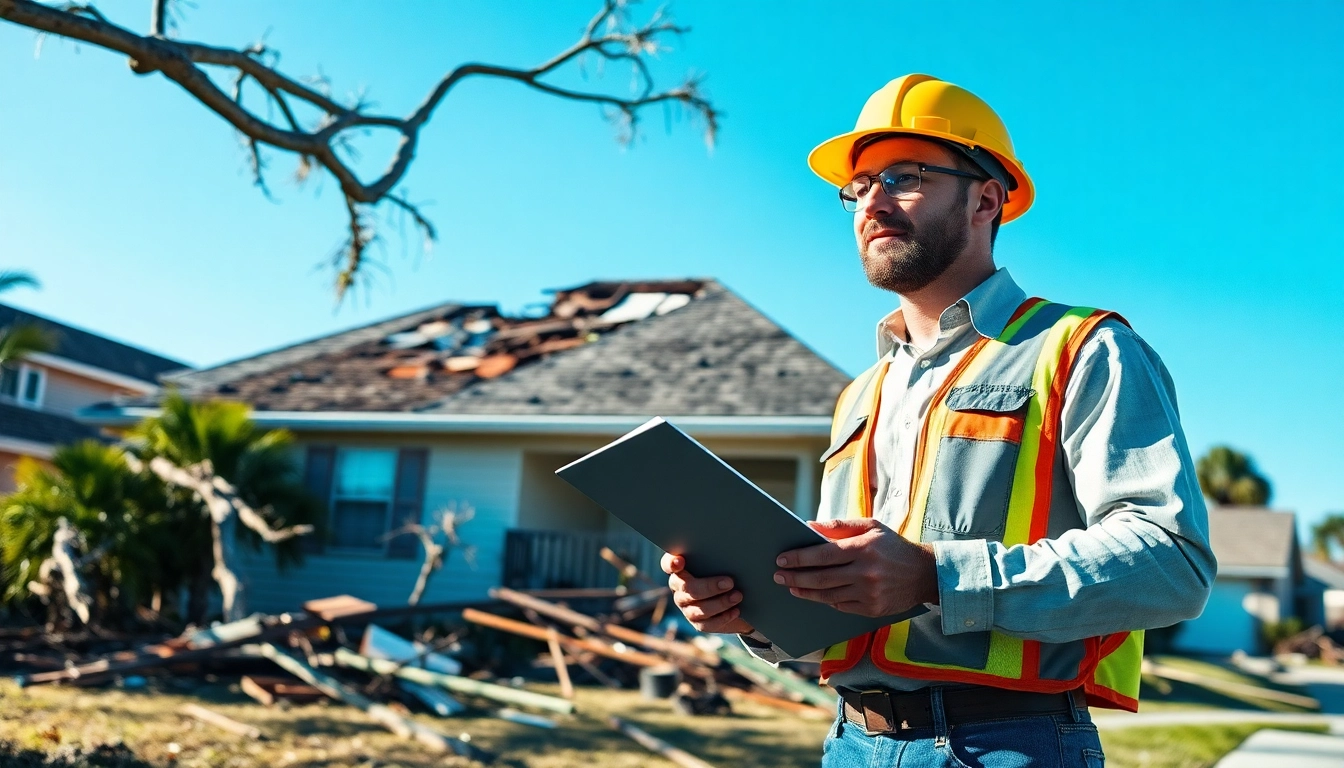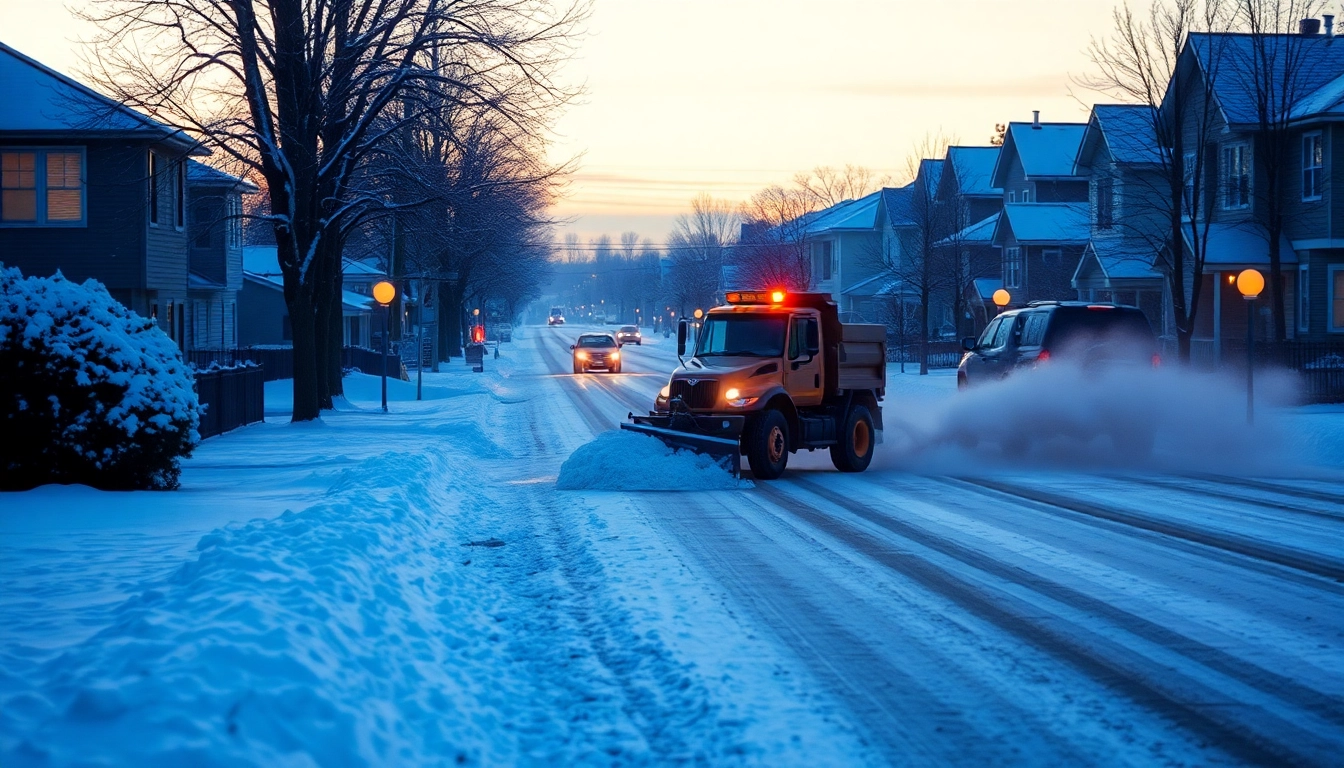Overview of Florida Hurricane Damage
Florida is uniquely positioned as a prime target for hurricanes, with its extensive coastline and warm subtropical climate. The state experiences hurricanes nearly every season, causing significant and sometimes devastating damage to homes and properties. Understanding Florida Hurricane Damage is crucial for homeowners and residents to prepare for the impending reality of these natural disasters.
Types of Damage Caused by Hurricanes
Hurricanes can cause a variety of damage, including:
- Wind Damage: High winds can uproot trees, tear off roofs, and break windows. Structures that are not designed to withstand hurricane winds are particularly vulnerable.
- Water Damage: Storm surges and heavy rainfall can lead to flooding, which can damage not just the building’s structure but also electrical systems and personal belongings.
- Debris Damage: Winds can turn ordinary objects into projectiles, causing additional damage to roofs, windows, and siding.
- Structural Damage: The pressure from winds and flooding can compromise the integrity of homes, leading to more extensive and costly repairs.
Common Areas Affected in Residential Properties
In residential properties, specific areas tend to suffer more than others due to the impact of hurricanes:
- Roofs: The roof is often the first line of defense against hurricane conditions. Damage can occur from wind uplift, tearing off shingles, or being crushed by falling debris.
- Windows and Doors: Vulnerable openings like windows and doors can shatter or blow off, leading to severe interior damage from wind and rain.
- Basements and Foundations: Heavy rains and flooding can lead to significant water accumulation, undermining foundations and causing structural instability.
- Landscaping: Trees, shrubs, and lawns can suffer from uprooting, broken branches, or being entirely washed away by flooding.
Statistics and Trends on Hurricane Impact in Florida
Statistics reveal a sobering reality about hurricane impacts in Florida. On average, the state experiences several hurricanes each decade, with severe storms resulting in billions of dollars in damage. In recent years, trends show an increase in storm intensity, with warmer ocean waters contributing to more powerful hurricanes. Studies suggest that the frequency of Category 4 and 5 hurricanes is on the rise, increasing both the immediate and long-term consequences for communities across Florida.
Assessing Hurricane Damage in Florida
After a hurricane, quick and accurate assessment of the damage is critical for homeowners to take the necessary steps for repair and recovery. Knowing how to assess damage can save time and money.
Initial Steps for Damage Assessment
The first step post-hurricane is to ensure safety:
- Inspect the exterior for visible damage such as missing shingles, damaged siding, or broken windows.
- Check trees and landscaping for potential hazards, ensuring there are no fallen trees or branches that pose a risk.
- Evaluate the interior for any signs of flooding or water damage, including damp walls, ceilings, and flooring.
- Document everything with photos and notes for insurance purposes.
Utilizing Professional Inspection Services
While DIY assessments can be beneficial, enlisting the help of professional inspectors is often a wise choice, especially for extensive damage assessments. Experts can identify hidden problems such as structural issues, plumbing damage, and mold growth that homeowners may overlook. Hiring professionals ensures a thorough evaluation and provides a solid basis for filing insurance claims.
DIY Assessment Tips for Homeowners
For those who prefer to inspect their property themselves, consider these DIY tips:
- Use a checklist to keep track of damage for easier reporting to your insurance company.
- Prioritize safety by wearing protective gear and avoiding areas with standing water or unstable structures.
- Look for signs of wind or water damage both inside and outside, focusing on critical areas like the roof, walls, foundation, and appliances.
- Take detailed notes and photographs to support any claims or public assistance applications.
Repairing Florida Hurricane Damage
Once damage has been assessed, the next step is repair which can be overwhelming. Knowing how to go about repairs can help homeowners minimize hassles and costs.
Choosing the Right Materials for Repairs
When it comes to repairing hurricane damage, selecting the right materials can make a significant difference in the durability and longevity of repairs. Here are some recommendations:
- Roofing: Choose wind-resistant materials such as metal roofing or impact-resistant shingles.
- Windows: Consider installing storm shutters or impact-resistant glass to protect against future storms.
- Doors: Reinforce entry doors with heavy-duty materials and frames that can withstand strong winds.
- Foundation: Use water-resistant materials and ensure proper drainage to prevent flood damage.
Working with Contractors: What to Look For
Selecting the right contractor is crucial for effective repairs. Here are criteria homeowners should consider:
- Verify contractor credentials and insurance to ensure they are licensed and have coverage for potential liabilities.
- Ask for recommendations from friends, family, and local reviews to find reputable professionals.
- Request multiple quotes to compare pricing, materials, and timelines.
- Review past work and customer testimonials to ensure the contractor has a proven track record with hurricane damage repairs.
Insurance Claims Process for Hurricane Damage
Filing an insurance claim after hurricane damage can be a complicated process. Here are key steps to follow:
- Contact your insurance agent quickly to report damage and begin the claims process.
- Document all damages thoroughly with photos and written descriptions.
- Keep records of all communications with your insurance company, including claims adjuster visits and estimates.
- Be prepared to provide evidence of previous damage or lack thereof for smoother processing.
Preventive Measures Against Future Hurricane Damage
Preparation can significantly lessen the effects of hurricane damage. Implementing preventive measures can save homeowners from future losses and dangers.
Effective Home Reinforcement Techniques
There are several ways to reinforce your home against hurricane damage:
- Installing hurricane straps and clips to secure roofs to walls can prevent uplift.
- Concrete or block construction provides improved resistance against wind and flood damage.
- Elevating structures above ground level can reduce flood risk in flood-prone areas.
- Regularly maintaining landscaping such as trimming trees away from the house can reduce the risk of falling limbs during storms.
Community Resources for Hurricane Preparedness
Many community organizations offer resources to help residents prepare for hurricanes:
- Local governments often provide information on evacuation routes, shelters, and emergency services.
- Red Cross and similar organizations offer disaster preparedness programs, including free supplies and training sessions.
- Community workshops on home reinforcement and preparedness activities can teach valuable skills and techniques.
Understanding Local Building Codes and Regulations
Familiarizing yourself with local building codes and regulations is crucial for construction and renovation, especially in hurricane-prone areas. Ensure compliance with:
- Stricter building codes designed to withstand high winds and flooding may be in effect in some locales.
- Securing necessary permits prior to starting any structural repairs or modifications can prevent fines and delays.
- Consulting with local building departments for guidelines on constructing hurricane-resistant structures can provide peace of mind.
Post-Hurricane Recovery and Support
Recovery after a hurricane can take time and effort, but knowing where to find support can ease the burden on affected homeowners.
Assistance Programs Available for Affected Homeowners
Various assistance programs exist to support homeowners in recovering from hurricane damage:
- Federal Emergency Management Agency (FEMA) offers emergency assistance for homeowners and renters affected by disasters.
- State and local government grants may be available to help with temporary housing, home repairs, and living expenses.
- Non-profit organizations, such as Habitat for Humanity, may provide volunteer assistance for rebuilding efforts.
Community Resilience Initiatives in Florida
Communities often form resilience initiatives to increase preparedness and improve response times. These initiatives may involve:
- Creating neighborhood networks to disseminate information quickly.
- Establishing community emergency response teams (CERT) to coordinate local response efforts during disasters.
- Organizing training sessions that teach individuals how to address injuries, manage resources, and provide aid to neighbors.
Long-term Strategies for Disaster Recovery
Long-term recovery strategies focus on building back better and preparing for future events:
- Investing in resilient infrastructure can minimize future damage and costs associated with hurricane recovery.
- Engaging in policy advocacy to promote sustainable practices and funding for disaster preparedness is vital for community strength.
- Establishing a personal emergency fund to cover expenses before insurance payouts can alleviate financial stress for homeowners.



